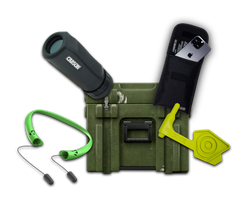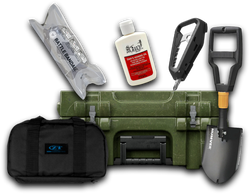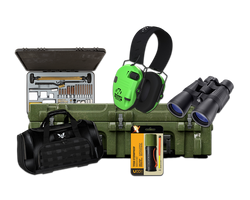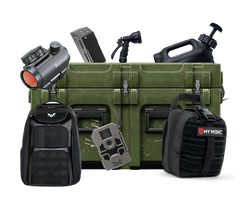Do Trail Cameras Work in Cold Weather? A Comprehensive Guide
Table of Contents
- Introduction
- Understanding How Cold Weather Affects Trail Cameras
- Choosing the Right Batteries for Cold Weather
- Optimizing Your Trail Camera Setup for Winter Use
- The Benefits of Winter Wildlife Photography
- Conclusion
- FAQ
Introduction
As winter blankets the landscape with frost and snow, many outdoor enthusiasts find themselves pondering the effectiveness of trail cameras during this frigid season. The biting cold often leads to questions: Will my trail camera still function in sub-zero temperatures? What steps can I take to ensure it captures the wildlife I’m eager to observe? If you’re an outdoor lover, a hunter, or simply a wildlife observer, understanding the capabilities of your trail camera in cold weather is vital.
The interest in using trail cameras during winter is not just about capturing images of elusive deer; it extends to monitoring a variety of wildlife, including predators like coyotes and bobcats, which may be more active in the colder months. While many believe that winter is a time to store away outdoor gear, the truth is that the colder months offer unique opportunities for wildlife photography and research.
In this blog post, we will explore the various aspects of using trail cameras in cold weather, including how temperature affects camera performance, the types of batteries best suited for low temperatures, and tips for optimizing your setup. By the end of this article, you will be equipped with the knowledge to effectively utilize trail cameras in cold conditions, ensuring you capture stunning winter wildlife images.
Understanding How Cold Weather Affects Trail Cameras
The Impact of Temperature on Camera Functionality
When temperatures drop, the performance of electronic devices, including trail cameras, can be significantly affected. Here are some key factors to consider:
-
Battery Performance: Most trail cameras rely on batteries to operate, and cold weather can drastically reduce battery life. Alkaline batteries, for example, tend to lose power quickly in low temperatures. In contrast, lithium batteries perform much better and are recommended for winter use.
-
Trigger Speed and Sensitivity: Cold temperatures can slow down the internal mechanisms of a camera, affecting its trigger speed. This means that a camera might miss some fast-moving wildlife or fail to activate when it should.
-
Image Quality: Cameras may also struggle to produce clear images in cold conditions. The infrared sensors that detect heat differences may not function optimally if the surrounding temperatures are too low, leading to issues like black photos.
-
SD Card Performance: Just like batteries, SD cards can experience issues in cold weather. They may write data slower than usual, leading to delays in capturing images.
The Importance of Camera Quality
Not all trail cameras are created equal, especially regarding their performance in extreme conditions. Lower-priced models often fail in temperatures below 0 to 10 degrees Fahrenheit. If you are serious about capturing wildlife during winter, investing in high-quality cameras designed for extreme conditions is essential. Brands that specialize in rugged outdoor products often have models rated for use in sub-zero temperatures.
Choosing the Right Batteries for Cold Weather
Lithium vs. Alkaline Batteries
As previously mentioned, battery choice is crucial when using trail cameras in cold weather. Here’s a detailed comparison:
-
Lithium Batteries: These batteries are the best choice for cold weather. They maintain their performance even in low temperatures and have a longer shelf life, allowing you to run your camera for weeks or months without needing a change.
-
Alkaline Batteries: While more affordable, alkaline batteries lose power quickly in cold weather, often leading to premature camera shutdown. If you plan to use alkaline batteries, be prepared for significantly reduced performance.
Practical Tips for Battery Management
-
Always Start with Fresh Batteries: At the onset of winter, replace old batteries with new ones to ensure your camera has optimal power.
-
Keep Batteries Warm: If you are checking or swapping batteries in extremely cold conditions, keep spare batteries in an inside pocket to warm them before installation.
-
Use Dual Battery Sets: Consider using two sets of batteries and rotating them if you're in a location where you can easily access your camera.
Optimizing Your Trail Camera Setup for Winter Use
Strategic Placement
Finding the right location for your trail camera is vital for capturing wildlife activity. Here are some tips:
-
Focus on Food Sources: In winter, animals are often searching for food. Placing your camera near known food sources, like feeding stations or natural food plots, can increase your chances of capturing images.
-
Utilize Natural Features: Look for natural trails, crossings, or areas of animal activity. Placing your camera near a water source or a den can yield fascinating results.
-
Elevate Your Camera: Snow can accumulate and obscure your camera’s view. By elevating the camera on a tree or post, you can minimize the impact of snow and ensure it captures images effectively.
Adjusting Camera Settings
Understanding your camera’s settings is essential to optimize its performance in cold weather:
-
Increase Picture Delay: Extending the time between shots helps conserve battery life and allows the camera to recover between triggers.
-
Lower Sensitivity Settings: If you're experiencing issues with missed triggers, try lowering the sensitivity of the motion detector. This may help in colder temperatures when the camera is less responsive.
-
Test Before Deployment: Before placing your camera out in the field, conduct tests indoors to ensure it functions as expected in cold conditions.
The Benefits of Winter Wildlife Photography
Winter offers unique opportunities for capturing stunning wildlife images that might be hard to come by during warmer months. Here are just a few reasons to keep your trail cameras active:
-
Less Foliage: With fewer leaves and foliage, your chances of capturing clear images of wildlife increase significantly. Animals are also more visible against the snow.
-
Behavioral Changes: Winter can change animal behavior, leading to different activity patterns. Predators may become more active, and some species will gather in larger groups.
-
Unique Landscapes: The snow-covered landscape offers a striking backdrop for wildlife photography, resulting in beautiful and dramatic images.
Conclusion
Do trail cameras work in cold weather? Absolutely, with the right equipment, setup, and strategies. While winter presents challenges for trail camera performance, understanding how to navigate these obstacles can lead to rewarding experiences and stunning wildlife captures.
By investing in quality cameras, using appropriate batteries, and optimizing your setup, you can effectively document the wildlife that thrives in winter conditions. Whether you're a seasoned hunter or a wildlife enthusiast, winter is a season full of opportunities waiting to be explored.
If you're looking to enhance your tactical preparedness for wildlife observation, consider exploring the offerings at Crate Club. Each subscription tier provides unique gear and tools to aid your outdoor adventures, ensuring you're equipped for any situation. Check out the Crate Club Subscription Services here and browse our curated selection of tactical gear and survival tools in the Crate Club Shop here.
FAQ
Can all trail cameras work in cold weather?
Not all trail cameras are designed for cold temperatures. It's essential to choose a high-quality camera that is rated for extreme cold if you plan to use it in winter conditions.
How can I ensure my trail camera works effectively in the cold?
Using lithium batteries, strategically placing your camera, adjusting settings for winter conditions, and conducting pre-deployment tests can help ensure effective operation in cold weather.
What types of wildlife can I expect to capture in winter?
Winter can offer opportunities to capture images of various wildlife, including deer, coyotes, bobcats, and other animals that may be more active during the colder months.
How do I manage battery life in cold weather?
To manage battery life, always start with fresh batteries, keep spare batteries warm, and consider using dual battery sets for easy rotation.
Can I use my trail camera during a snowstorm?
While it’s possible to use your camera during a snowstorm, be mindful of snow accumulation that may obstruct the camera. Ensure it is securely mounted and consider protective housing if necessary.
By applying these insights and utilizing the right gear, you can make the most of your trail camera experience, even in the coldest of conditions.
Share this article



